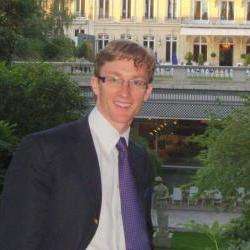Monumental and magnificent, Bach’s Mass in B minor defies any neat categorisation. The powerful choruses and glistening contrapuntal passages are set alongside the simplest of melodies and wondrous harmonic, daring for its time. Its titanic length makes it unsuitable for even the most solemn liturgical event, adding to the mystery of why a Protestant composer would write such a Catholic work as a Mass.
Daunted by neither its technical complexities nor its enormous artistic demands, the Bach Collegium Japan under the ever-thoughtful direction of Masaaki Suzuki gave a generally convincing rendition of this masterpiece. Since its founding in 1990 by Suzuki, the Bach Collegium Japan have aimed at bringing period instrument performances of the Baroque period to Japanese audiences. With a special affinity for Bach, they have recently concluded a recording of his complete cantatas, a project which lasted just under 20 years.
Last night’s performance captured the profound spiritual depths of this work. There were quibbles over balance between singers and soloists, and singers and instrumentalists, but these ceded into the background as the overarching vision and subtle shaping of line produced a marvellous tapestry of sound.
While there is a recurring temptation to monumentalise this work with its triumphant choruses and blazing brass, this was never an issue due to the modest forces on offer here (14 singers and 27 instrumentalists). At times, quite the reverse seemed to inform this interpretation. In the opening Kyrie the choir lacked the laser-like intensity which the music calls for and which they showed themselves capable of at later stages. The delicate lines of the fugue were etched delightfully by the flute and oboe d’amore but both the tenors and basses in their exposition of this theme lacked sufficient sonority. Soloist Dominik Wörner’s addition to the bass section, while providing much needed volume, meant that he ended up projecting clearly over the other three basses. The choral singing of the “Qui tollis” in the Gloria possessed gravitas but it was not until the end of this part of the Mass at the “Cum Sancto Spiritu” that all the voices settled and delivered a lively counterpoint that crackled with energy.
The solo movements of the first half represented a mixed offering too. The “Christe Eleison” duet for two sopranos (Joanne Lunn and Rachel Nicholls) suffered from an imbalance in both tone and expression. Nicholls had stepped in for Hana Blažíková and was particularly underwhelming in the first duet. Lunn’s smiling presence and pearly voice shone ever more clearly in contrast to her partner’s serious mien and quiet voice. By the Gloria in the soprano and tenor duet “Domine Deus” Nicholls’ voice had opened up and both she and Zachary Wilder charmed with the delicate lines of music. Counter-tenor’s Robin Blaze’s voice impressed in his aria “Qui sedes”; combining lightness and an ability to project all the way to the back of the hall, he phrased each line with all the care and sensitivity of an Ingres. Given that Wörner is a bass-baritone, he lacked sufficient depth in the lower register of his first aria “Quoniam tu solus sanctus” though the sweet heft of his higher notes rang out all the more gloriously in contrast.
In general, the orchestra provided sensitive support. From intricate energetic fugues to muted string accompaniment, this period instrument ensemble nailed the intonation right from the start. The oboes impressed in the accompaniment of the soloists with their great delicacy while the brazen trumpets of the Gloria merged in with the overall sound world Suzuki drew from the orchestra. At times, the orchestra was a little too busy for the soloists’ projection as in the duet “Et in unum Dominum” but as the second half wore on the balance became more in harmony.
In the second half I was much struck by Wörner’s aria “Et in Spiritum Sanctum”. Like a red wine which needs decanting and time to breathe, his voice opened up wonderfully after the interval as he imbued each word with a deep expressiveness. Blaze continued to impress with a meltingly tender Agnus Dei aria, the long, pure notes, shorn of vibrato conveying an intense depth of feeling.
The chorus seemed to have found its mark in the second half too, with fine, interweaving lines in both the “Credo” and “Confiteur unum baptisma” while the myriad of voices praising God in the Sanctus created a kaleidoscope of sound giving an excellent idea what the heavenly chorus might sound like. As the “Dona nobis pacem” came to its spine-tingling conclusion, the music swept us heaven-ward, and we were conscious of having been the fortunate ones to have listened to one of the world's greatest works of art.


